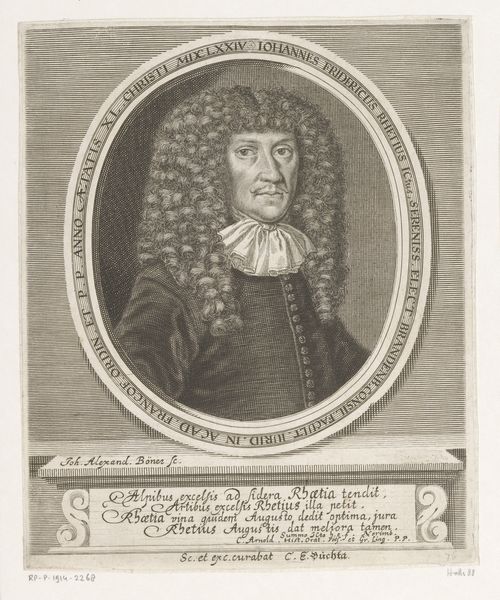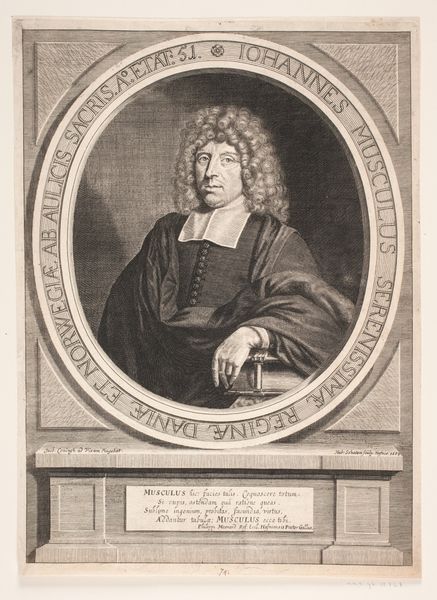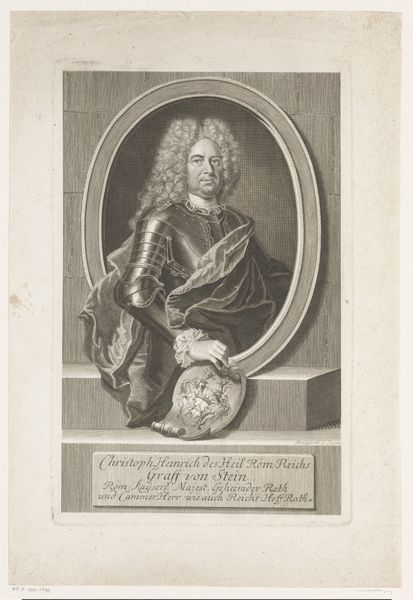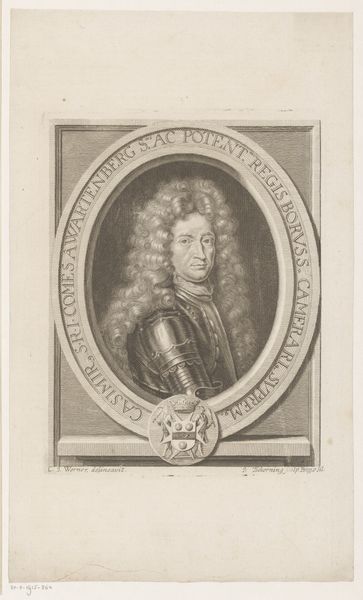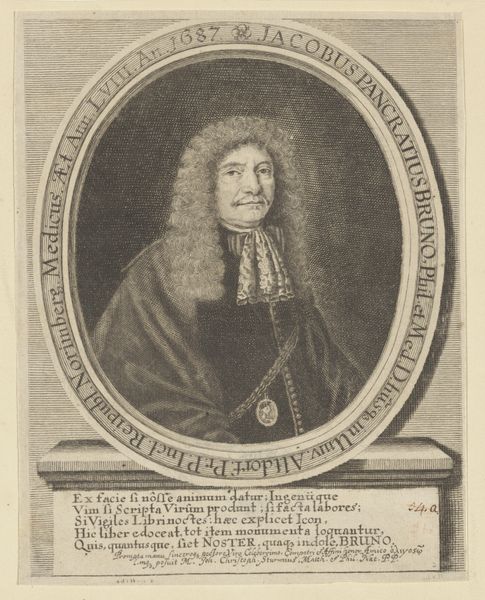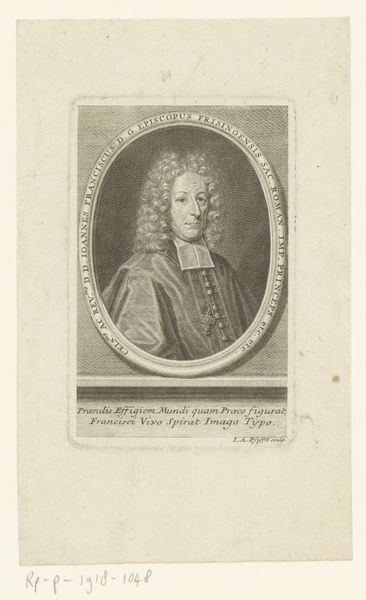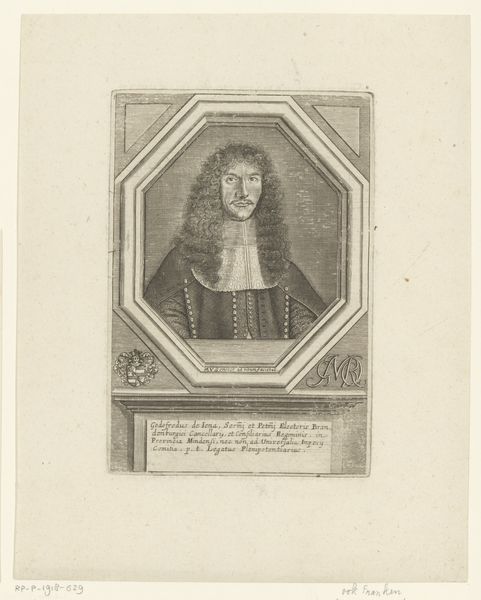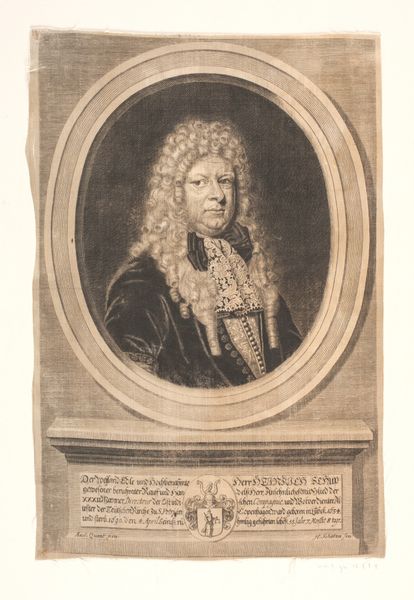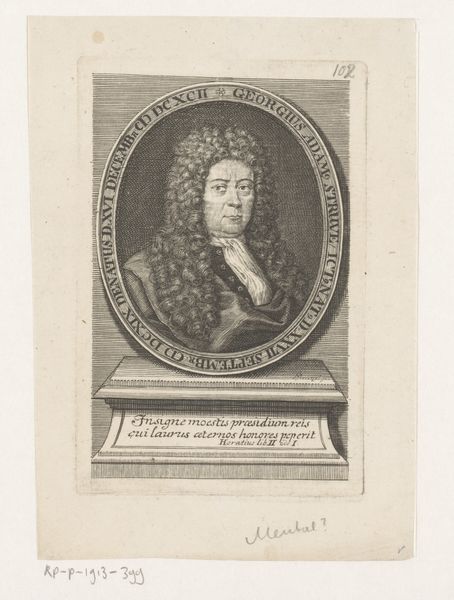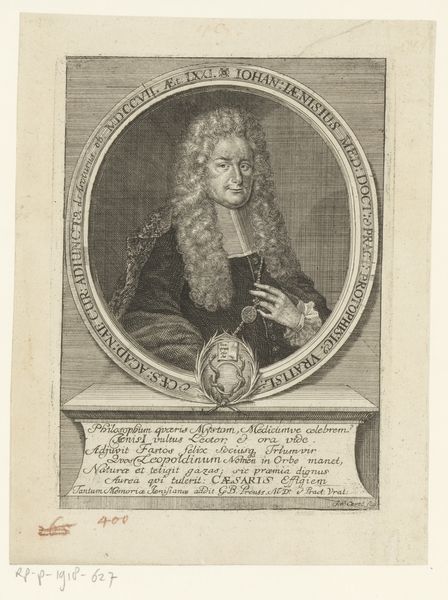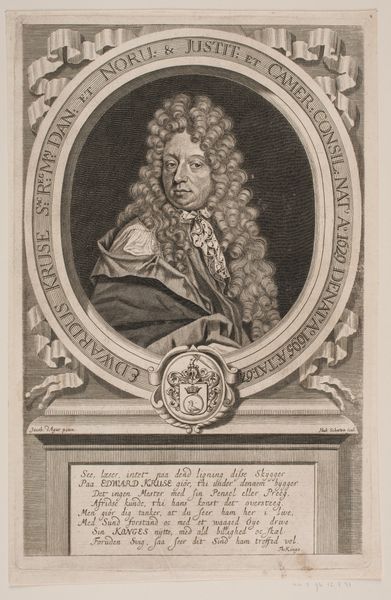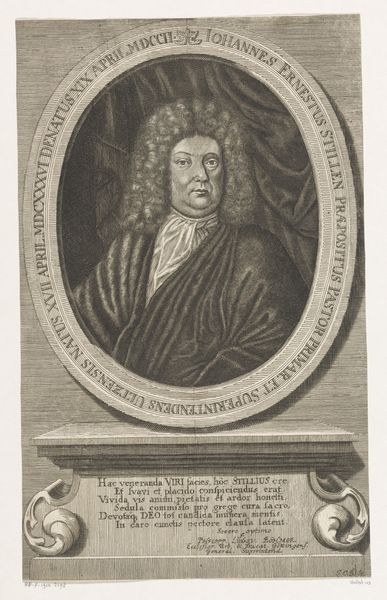
print, engraving
#
portrait
#
baroque
# print
#
engraving
Dimensions: height 183 mm, width 137 mm
Copyright: Rijks Museum: Open Domain
Editor: This engraving from 1686 is a portrait of Eberhard Werner Happel at 34 years old by Leonhard Heckenauer. The baroque detail is amazing, but he kind of has a ‘meh’ look on his face. What's your take? Curator: Beyond his expression, this image operates within very specific visual and social languages of power and status. Look at the inscription – it explicitly states his age and emphasizes his name. What does this declaration suggest about the intended audience and the function of the print? Editor: Well, I guess it shows off his identity to the people who see it. Like, "Hey, world, look at Eberhard Happel!" It seems pretty self-important. Curator: Indeed! In 17th-century Europe, portraiture served as a powerful tool for constructing and disseminating identity. Consider the role of the printing press here: how does its function as a reproducer amplify the portrait's cultural influence? The availability of printed images allowed for the broader circulation of these messages beyond an aristocratic elite, shaping perceptions of the individual and, potentially, his cultural capital. Editor: So it’s less about art for art’s sake and more about image control, even back then? Curator: Precisely! It speaks volumes about the interplay of art, identity, and the burgeoning public sphere. By controlling and disseminating their image through engravings, individuals like Happel actively shaped their social standing and contributed to the construction of celebrity culture of their era. Editor: I never thought about portraits like that, I’m now viewing art as propaganda. Curator: That’s a bit extreme! The dialogue enriches my understanding, too, shifting away from mere biographical portrayal to a tool of cultural dissemination, shaping, and controlling one's identity within the public sphere.
Comments
No comments
Be the first to comment and join the conversation on the ultimate creative platform.
